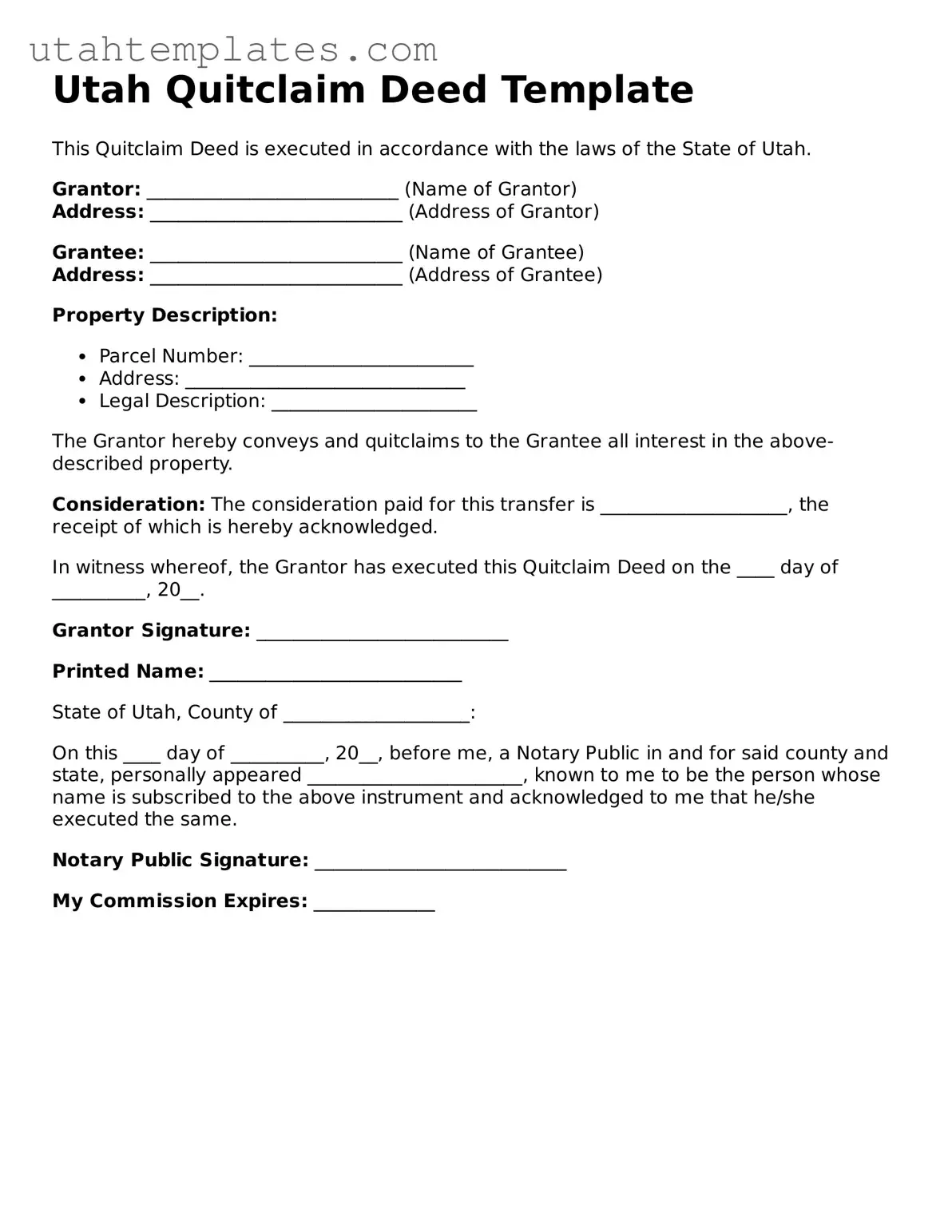Utah Quitclaim Deed Template
This Quitclaim Deed is executed in accordance with the laws of the State of Utah.
Grantor: ___________________________ (Name of Grantor)
Address: ___________________________ (Address of Grantor)
Grantee: ___________________________ (Name of Grantee)
Address: ___________________________ (Address of Grantee)
Property Description:
- Parcel Number: ________________________
- Address: ______________________________
- Legal Description: ______________________
The Grantor hereby conveys and quitclaims to the Grantee all interest in the above-described property.
Consideration: The consideration paid for this transfer is ____________________, the receipt of which is hereby acknowledged.
In witness whereof, the Grantor has executed this Quitclaim Deed on the ____ day of __________, 20__.
Grantor Signature: ___________________________
Printed Name: ___________________________
State of Utah, County of ____________________:
On this ____ day of __________, 20__, before me, a Notary Public in and for said county and state, personally appeared _______________________, known to me to be the person whose name is subscribed to the above instrument and acknowledged to me that he/she executed the same.
Notary Public Signature: ___________________________
My Commission Expires: _____________
